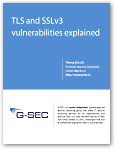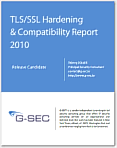This is a living blog post I will update whenever I have time and new ideas.
TOC
- Introduction
- Updates
- Attacker Classes
- Attacker Pyramid
- Q&A
Introduction
The other day I was brainstorming further on the attacker classes I came up with last year (to be modeled into an Security Assurance Model) when I stumbled across one of
Dan Guido's presentations - The way he used pyramids was a perfect fit to make my model more easily understood and to convey more information.
The pyramid display allowed to show the relation between the Type and Amount (Attacker class) and Type and Amount (Value of Business "Asset" at risk)
When trying to model complex interweaving ecosystems you have always to do trade-offs - This is the costs of trying to bring something down to the most common and easiest to grasp level. This is no different - When reading the below note the necessity of doing so and understand that I had to take some shortcuts. Your comments are welcomed per mail or as a comment below.
Updates
- 24.10.2011 - Renamed "Business Asset" to "Typical Targeted Asset", Added Sophistication Pyramid
- 24.10.2011 - Added Q&A Section
- 17.05.2012 - Added my OWASP BENELUX Presentation that is inline with the overall context and further explains the rationale.
- 17.05.2012 - For consistency : renamed "Targeted" to "Professional" in Pyramid.
Introduction
The presentation I gave at OWASP BENELUX entitled "The Rise of the Vulnerability Markets - History, Impacts, Mitigation" goes further on the rationale behind the proposed Attacker centric Model and implicitly deduced impacts and motivations.
Attacker classes
I thought about including and naming the following attacker classes in my model :
- Opportunists
- Targeting Opportunists
- Professional
- State Founded
Opportunists
This class includes but is not limited to Bots, Worms, Mass Malware, Script Kiddies. They are opportunistic in the way that they move on if they don't find a particular known vulnerability. The sophistication is relatively low and to compensate for it they use large scale.
Keywords : Large scale, low hanging fruits, low level of sophistication
Targeting Opportunists
This class represents a more targeted focused group of Opportunists, they don't scan and probe the internet and stop as soon as they stumble across something interesting. They target one organisation in an opportunistic way. Meaning they will mass scan a particular organisation continously looking for weak spots
Keywords : Targeted at a particular organisation, continuous probing, more sophisticated, more motivated
Professional
This class represents digital mercenaries, sophisticated "hackers" that are targeting particular organisations and assets over a period of time. This class does not halt at low hanging fruits or a particular attack vector but tries to get to the goal whatever it takes, they are funded to a certain degree and their sophistication allows them to come up with new ways to attack assets or bypass exploit mitigation techniques.
Keywords : Targeted, motivated, sophisticated
State Founded
This class represents a group of attackers that is very well funded and sophisticated, they represent the interests of nation states. This class is after Intellectual Property, Strategic Assets, Classified Information.
Keywords : Targeted, Specialised, Stuxnet
Attacker Pyramid
Below you see, what I call, an Attacker Pyramid. The pyramid on the left shows the 4 attacker classes, the surface area indicates the amount of threat agents within that class. The pyramid on the right displays the Asset the attacker class is after and the surface area is an indicative of the value that these assets represent for the business.
Attacker Classes and Sophistication
The Pyramids above can be complemented by an inverse Pyramid representing the Motivation / Sophistication and Funding.
Attacker Class Triad
The complete Triad would look like this
Q&A
What is the difference between this and Veris ?
Veris is post mortem, essentially an incident classification Framework, Veris and "this" have no real link. What is presented here it the concept of adjusting your defenses to the highest attacker class expected (HAE). It serves as a framework to classify data and assets into buckets that will allow you to zone and protect them accordingly.
Why "Attacker class" and not "Threat Agent"
This concept revolves around malicious intent not natural hazards or any of these sorts of more general threat agents. While I do like the term "Threat Agent" and I might change "Attacker class" into something else, I do still believe it captures the motivation and intent more directly than a generic "Threat Agent".
What do you think ? Let me know
Next update :
- Why is this important at all ? (Hint: Protect critical assets differently depending on the attacker class you want to protect it against)
 During my research on TLS/SSL Compatibility across different Operation Systems and Browsers I created supporting tools for myself and later decided to release them for the public.
During my research on TLS/SSL Compatibility across different Operation Systems and Browsers I created supporting tools for myself and later decided to release them for the public. 














.png)



